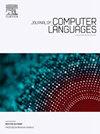A comprehensive meta-analysis of efficiency and effectiveness in the detection community
IF 1.8
3区 计算机科学
Q3 COMPUTER SCIENCE, SOFTWARE ENGINEERING
引用次数: 0
Abstract
Creating an intrusion detection system (IDS) is a prominent area of research that continuously draws attention from both scholars and practitioners who tirelessly innovate new solutions. The complexity of IDS naturally escalates alongside technological advancements, whether they are manually implemented within security infrastructures or elaborated upon in academic literature. However, accessing and comparing these IDS solutions requires sifting through a multitude of hypotheses presented in research papers, which is a laborious and error-prone endeavor. Consequently, many researchers encounter difficulties in replicating results or reanalyzing published IDSs. This challenge primarily arises due to the absence of a standardized process for elucidating IDS methodologies. In response, this paper advocates for a framework aimed at enhancing the reproducibility of IDS outcomes, thereby enabling their seamless reuse across diverse cybersecurity contexts, benefiting both end-users and experts alike. The proposed framework introduces a descriptive language for the precise specification of IDS descriptions. Additionally, a model repository facilitates the sharing and reusability of IDS configurations. Lastly, through a case study, we showcase the effectiveness of our framework in addressing challenges associated with data acquisition and knowledge organization and sharing. Our results demonstrate satisfactory prediction accuracy for configuration reuse and precise identification of reusable components.
对检测社区的效率和有效性进行综合荟萃分析
创建入侵检测系统(IDS)是一个突出的研究领域,不断受到学者和实践者的关注,他们孜孜不倦地创新新的解决方案。IDS的复杂性自然会随着技术的进步而升级,无论是在安全基础设施中手动实现还是在学术文献中详细阐述。然而,访问和比较这些IDS解决方案需要筛选研究论文中提出的大量假设,这是一项费力且容易出错的工作。因此,许多研究人员在重复结果或重新分析已发表的ids时遇到困难。这一挑战主要是由于缺乏阐明IDS方法的标准化过程而产生的。作为回应,本文主张建立一个框架,旨在提高IDS结果的可重复性,从而使其在不同的网络安全环境中无缝重用,从而使最终用户和专家都受益。提出的框架引入了一种描述性语言,用于精确规范IDS描述。此外,模型存储库有助于IDS配置的共享和可重用性。最后,通过案例研究,我们展示了我们的框架在应对与数据获取、知识组织和共享相关的挑战方面的有效性。结果表明,配置复用的预测精度令人满意,可复用组件的识别精度较高。
本文章由计算机程序翻译,如有差异,请以英文原文为准。
求助全文
约1分钟内获得全文
求助全文
来源期刊

Journal of Computer Languages
Computer Science-Computer Networks and Communications
CiteScore
5.00
自引率
13.60%
发文量
36
 求助内容:
求助内容: 应助结果提醒方式:
应助结果提醒方式:


